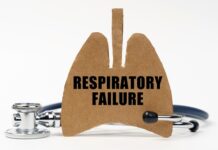Frailty significantly affects outcomes among older adults hospitalized for influenza, according to a study presented at the CHEST Annual Meeting in Boston, Massachusetts. Frail individuals were at higher risk for mortality and complications.
“Frailty, characterized by increased vulnerability due to age-related physiological decline, is increasingly recognized as a crucial factor influencing health outcomes in older populations,” wrote the authors, led by Karoona Bai. “Influenza, a prevalent respiratory infection, represents a significant public health concern, particularly among the elderly, who are disproportionately affected by its complications.” They cited data from the Centers for Disease Control and Prevention indicating that influenza causes about 12.6 deaths per 100,000 people annually.
The researchers aimed to elucidate how much frailty affects mortality and other outcomes in patients hospitalized for influenza. The data were gathered between 2016 and 2019 from the National Inpatient Sample on 305,820 patients hospitalized with influenza aged 60 years or older. Using Gilbert’s Frailty Score, the researchers classified patients with a score lower than five as low frailty risk (LFR), those with a score between five and 15 as medium frailty risk (MFR), and those with a score higher than 15 as high frailty risk (HFR). Of the total sample, 49.1% were LFR, 48.5% were MFR, and 2.3% were HFR.
Compared to the LFR group, the MFR and HFR groups had higher odds of:
- Acute respiratory distress syndrome: The MFR group had an adjusted odds ratio (aOR) of 1.225 (95% CI, 1.122–1.337; P<0.01). The HFR group had an aOR of 1.643 (95% CI, 1.280–2.110; P<0.01).
- Invasive mechanical ventilation: The MFR group had an aOR of 4.866 (95% CI, 4.504–5.256; P<0.01). The HFR group had an aOR of 12.395 (95% CI, 10.82–14.20; P<0.01).
- Noninvasive mechanical ventilation: The MFR group had an aOR of 1.85 (95% CI, 1.771–1.932; P<0.01). The HFR group had an aOR of 2.544 (95% CI, 2.273–2.849; P<0.01).
- Tracheostomy: The MFR group had an aOR of 12.096 (95% CI, 7.925–18.462; P<0.01). The HFR group had an aOR of 46.872 (95% CI, 26.269–83.636; P<0.01).
- Vasopressor use: The MFR group had an aOR of 9.284 (95% CI, 6.495–13.269; P<0.01) The HFR group had an aOR of 16.825 (95% CI, 10.155–27.876; P<0.01).
- Death: The MFR group had an aOR of 3.10 (95% CI, 2.864–3.355, P<0.01). The HFR group had an aOR of 5.05 (95% CI, 4.371–5.834; P<0.01).
“These findings stress the importance of recognizing frailty as a crucial factor in influenza management among older adults. Addressing the impact of frailty can help healthcare professionals reduce morbidity and mortality by implementing additional preventive measures, providing education, and improving access to vaccination during peak seasons,” the authors concluded.
Reference
Bai K, Kumari K, Bawna F,et al. Frailty’s role in the outcomes of older adults with influenza: a population-based study from the United States. Abstract #A1059-A1060. Presented at the CHEST Annual Meeting; October 6-9, 2024; Boston, Massachusetts.





